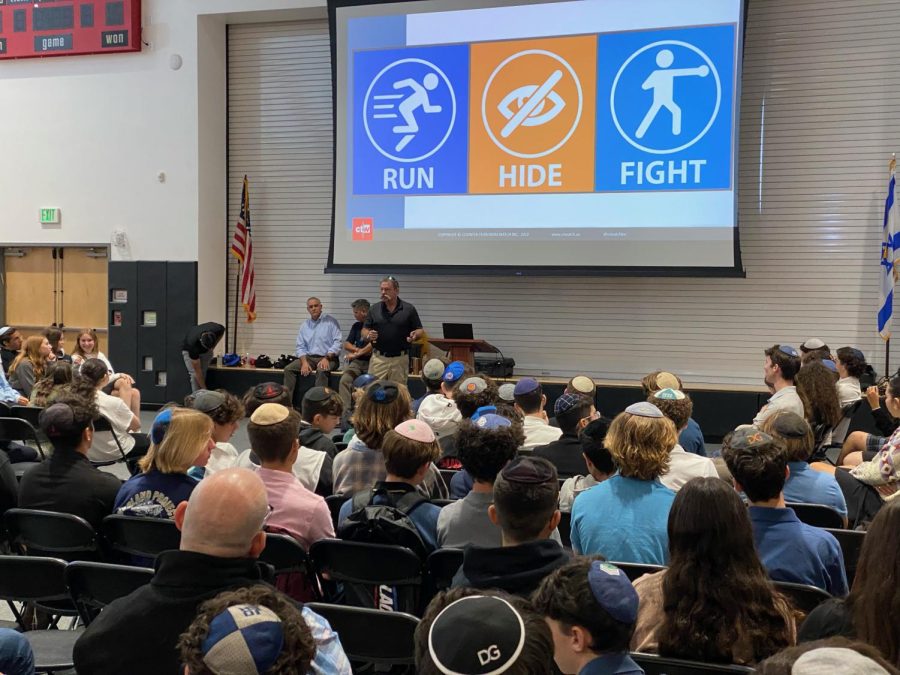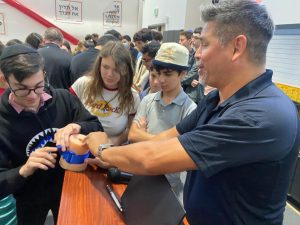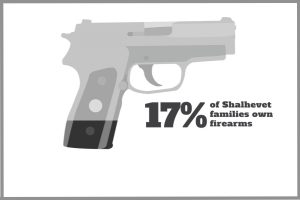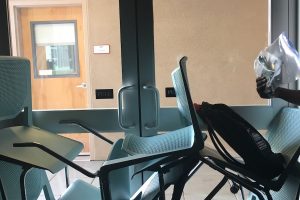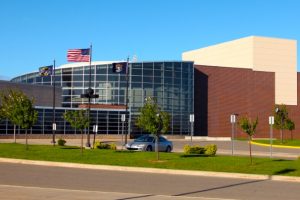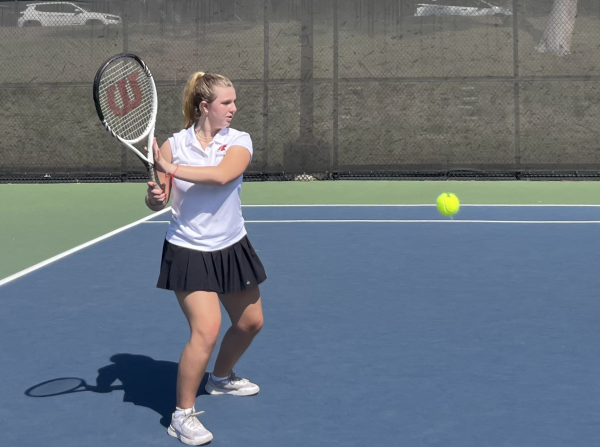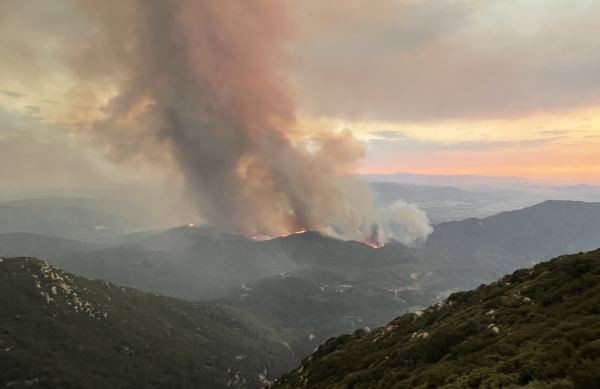EDITORIAL: Disaster drills save lives. We need them here.
TALK: Representatives of the C-T Watch security company address a 90-minute Town Hall Sept. 21 in the gym.
November 17, 2022
In the last few decades, school shootings have become an incessant problem facing high schools across America. Yet here at
Shalhevet there has not been a single lockdown drill in the past three school years. That means no current Shalhevet students have been trained for an active shooter situation.
In 2018, California had 157 violent incidents in schools, the highest number in America. According to the California Department of Education, 93% of schools in California have lockdown drills every year, and most have more than one.
 Most Shalhevet classrooms have built-in door stoppers to keep doors closed with more pressure than a simple lock– but students have not yet been taught how to use them. These locks should be especially prioritized because the Sandy Hook Advisory Commission reported door locks to be among the most important life-saving devices during a school shooting.
Most Shalhevet classrooms have built-in door stoppers to keep doors closed with more pressure than a simple lock– but students have not yet been taught how to use them. These locks should be especially prioritized because the Sandy Hook Advisory Commission reported door locks to be among the most important life-saving devices during a school shooting.
And a recent study conducted by the City University of New York (CUNY) found that lockdown drills have had a beneficial impact on participants during mass shootings, in and out of school. Drills have been proven to prepare people for real emergencies.
Although the Shalhevet building’s fortress-like nature and large security staff obviously provide tremendous protection, students need to be part of protecting themselves. Now may seem like a surprising time to highlight the lack of drills. Last month, the administration brought in three security specialists who for two hours instructed the student body to practice “relaxed awareness,” along with how to use and know where the exits are. The first half of the presentation featured a slideshow about being prepared for chaos before it ensues, finding cover, and emphasizing the importance of listening to instructions during an emergency.
During the second half of the program, grades were split up into groups with instructors who analyzed parts of the school building and explained what to do in specific scenarios.
This was an admirable effort and may increase awareness should a threat arise. But what no part of the two-hour-long break from class did involve was an actual drill that would show, not tell people what to do, in a lockdown situation or any of the other emergencies mentioned.
Shalhevet has also not had a fire drill since the beginning of the 2019-2020 school year, or an earthquake drill since before then. Covid complicated priorities tremendously during that time, and the school worked hard to make the building as safe as possible during a period that was sometimes terrifying and dangerous. But the the California Code of Regulations section 550 requires fire drills twice a year in secondary schools, and California Education Code 35297 requires earthquake drills once per semester in secondary schools. A Boiling Point survey of current ninth-graders found that our feeder schools Maimonides, Pressman, and Hillel all held at least one each of fire, earthquake and lockdown drills during the 2021-22 school year.
Some current students might remember hearing “Stop, drop, and roll,” or standing in a doorway during an earth- quake, but under extreme circumstances, Shalhevet students would not be prepared. Considering that California has the most earthquakes of any state in the contiguous United States, this situation needs to be remedied.
The Boiling Point Editorial Board is calling for fire, lockdown and earthquake drills, which would give Shalhevet students practice and demonstration for an emergency, rather than simply telling them to be prepared.
test2

